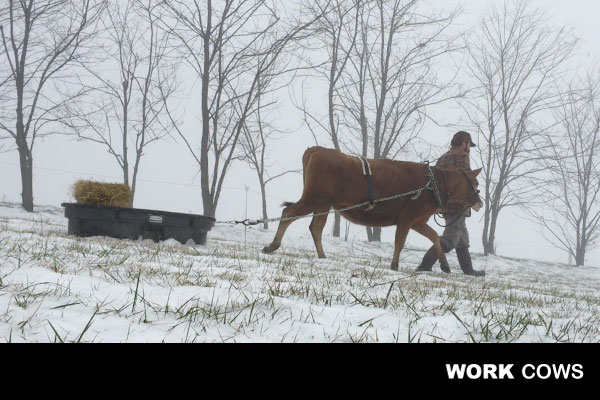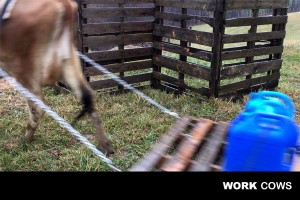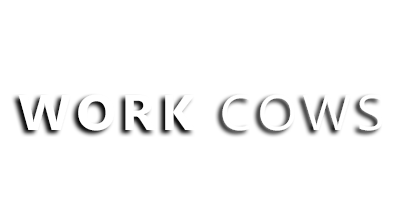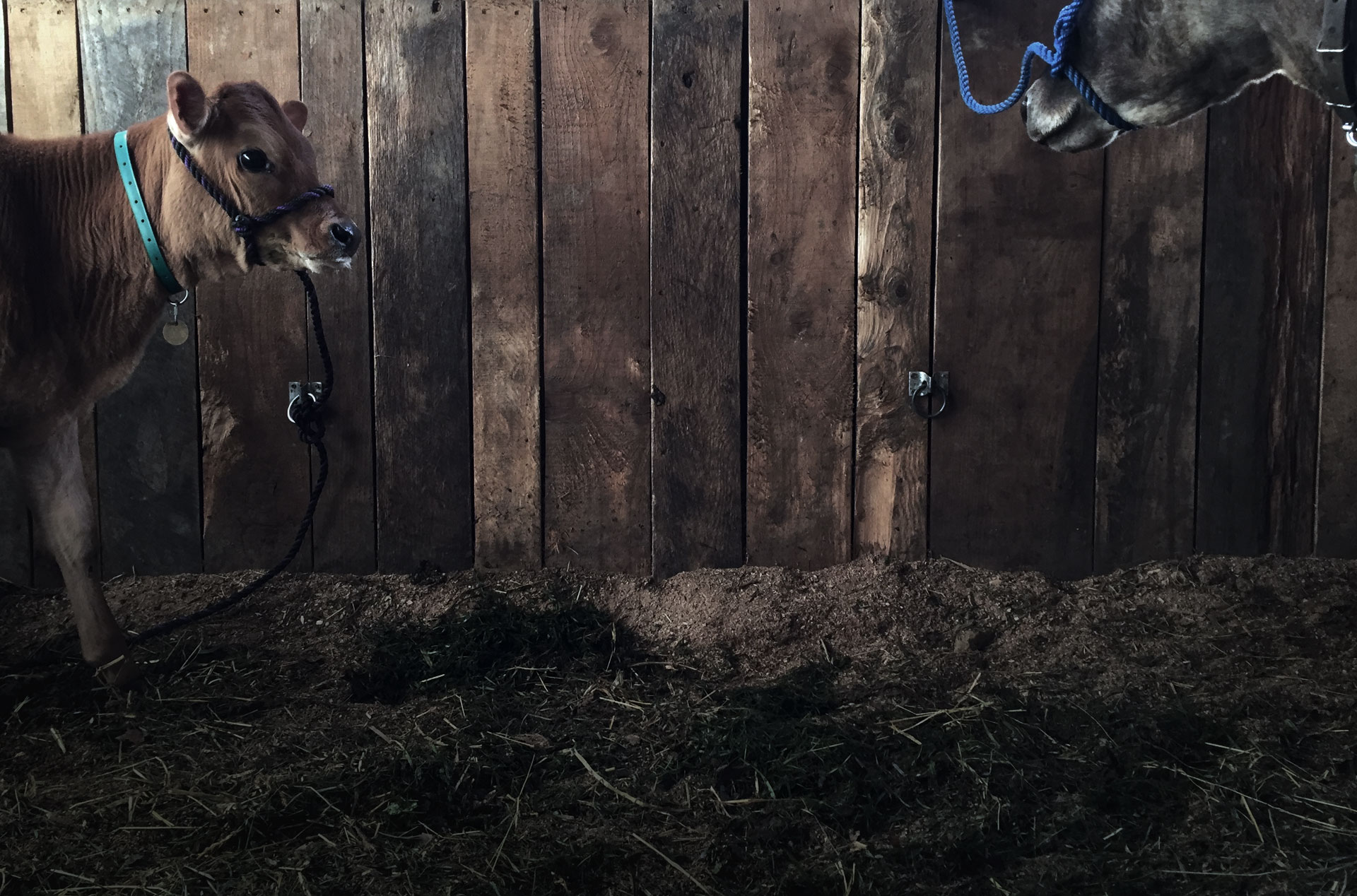
20 Dec Making the Case for Using Dairy Cows as Draft Power on the Farm – Part Two
 In part one, we examined many of the common ideals and beliefs about the modern dairy cow, and exposed some of the reasons why these strong, intelligent animals are not being used to their full potential by modern American farmers and homesteaders. In part two, we continue our discussion of bovine draft power and explore the way it continues to be used on small farms and land holdings in other countries around the globe to provide practicality and economy that could also benefit many small farmers here in the United States.
In part one, we examined many of the common ideals and beliefs about the modern dairy cow, and exposed some of the reasons why these strong, intelligent animals are not being used to their full potential by modern American farmers and homesteaders. In part two, we continue our discussion of bovine draft power and explore the way it continues to be used on small farms and land holdings in other countries around the globe to provide practicality and economy that could also benefit many small farmers here in the United States.
The Dairy Draft Animal in Action
In September of 1995, a consultation was held in Addis Ababa, Ethiopia with the purpose of exploring the practicality of using dairy cows as a multiple use animal and to extend this use throughout several African and Asian countries. This idea was brought about as a way to help empower small farmers in these regions who were often forced to manage on very small acreages.
While oxen could be used to provide the draft power these farmers needed to plow, plant and harvest, most are not able to support animals specifically used for draft power, in addition to the cows they needed to keep to provide their families with meat and milk.
By eliminating oxen from the equation and utilizing the dairy cows for all three purposes, farmers could manage their farms more productively, without overstocking their available land or having to buy supplemental feed or find additional grazing land, which is rarely an option in these regions. In a nutshell, utilizing dairy cows as a source of milk, meat and draft power provided these farmers with a more sustainable lifestyle for their families and their communities.
Overcoming the Problems Associated with Using Dairy Cows for Draft or Traction Power
Convincing the African and Asian farmers to give up their oxen and train their dairy cows for draft and traction work was not, however, without some very real challenges. While some immediately saw the benefits by doing this, others resisted this innovative idea, in part due to societal or cultural resistance to change, an unwillingness to risk learning new ways or even concerns about what others in the community would say.
This was particularly difficult for the people of Ethiopia, who have been called “the people of the plow” for countless generations, all of which had used oxen to provide the power. Fourteen households were interviewed as part of the consultation process, all of which had crossbred cows which were believed to be better suited for these farm use scenarios.
Of the 14 that were interviewed, only seven households were actually willing to adopt and implement the use of their dairy cows for draft and traction power. Additionally, another 36 households who were unwilling to use cows in this manner were also interviewed, citing their reasons as:
- related to technical or economic issues
- related to cultural attitudes, beliefs or community values, including superstitions and morality issues
- related to concerns for the health and welfare of the cow
In other words, many of the same misconceptions that have held American farmers back from the use of bovine draft power are also seen in other countries, such as concerns about what the “neighbors or community might think.”
Regional Attitudes and the Influence of External Issues
In other areas, the appeal and benefits of bovine draft power often outweigh these concerns, particularly when influenced by external issues. In Mozambique, for example, a rising level of interest in the use of bovine draft power was originally noted in the mid-1980s. Drought, wildfire, civil turmoil and economic instability in these regions have historically impacted the availability and quality of grazing land for livestock.
Farmers who experience a reduction of available grazing land are forced to reduce the amount of livestock they manage and many opt to eliminate their dedicated draft animals, usually oxen, in favor of utilizing their dairy cows for multi-purpose use. A 1992 survey taken of small farmers and land owners in rural Mozambique showed that more than half were using their cows for draft power, at that point in time.
Considerations Regarding the Use of Bovine Draft Power Both Here and Afar
One of the issues that is often voiced as a negative point regarding the use of bovine draft power concerns the cow’s health during both gestation and lactation. In truth, just as healthy exercise helps the human female retain the strength and muscle tone needed for both birthing the child and recovering afterward, a healthy bovine also benefits from a regular routine that includes moderate exercise and activity.
As someone who successfully breeds and trains dairy cows for light to moderate draft use on the small farm or homestead, a fifteen-day period of rest, both before and after the delivery of the calf is usually more than adequate to protect the health of both the dam and her calf. This time frame allows for the pelvic muscles and tissues to return to their normal condition and placement, while also allowing time for normal udder edema or congestion issues to clear before the cow resumes light duty training or tasks.
During the studies and surveys taken abroad, it became clear that bovine pregnancy was one of the main concerns mentioned by the farmers and small holders who participated. Experts who weighed in on this topic provided some interesting insight, including the following quotes:
- “The attitude towards using cows for work during pregnancy will change. In other countries cows are used for traction until about two months before expected parturition.” (B. Muller-Haye, Chief Research Development Service Food and Agriculture Organization of the United Nations)
- “Yes, I think that in most parts of the country the farmers will use cows until they have males to replace the cows. However, I think that in irrigated areas, where there are strict regulations on the number of animals allowed to graze, farmers will reduce their herds and use cows for multiple purposes.” (O. Faftine, Animal Scientist Instituto de Producao Animal, based in Mozambique)
- “Our experience over five years of on-station work with cows working 100 days per year is that cows can work up to 15 days before expected calving date and restart 15 days after parturition. In six years with 40 cows there was not a single abortion. I would like to point out to everyone who is concerned about the effect of work on pregnancy that there is no effect per se as long as cows are fed adequately…” (E. Zerbini, International Livestock Research Institute, based in India)
These experts, as well as my personal experience with breeding and training dairy cows for multi-purpose use on the small farm or homestead, illustrates that the practice does not harm the cow in any way. Instead, bovine dairy power can help revitalize the small farming industry by helping families reduce their overhead and become more efficient and sustainable.
Now that you have a clearer understanding of bovine draft power, you may be thinking ahead to all the ways in which one or more of these intelligent, hard-working animals could benefit your farm or homestead.
Source
https://cgspace.cgiar.org/bitstream/handle/10568/2849/TechTran.pdf?sequence=1

